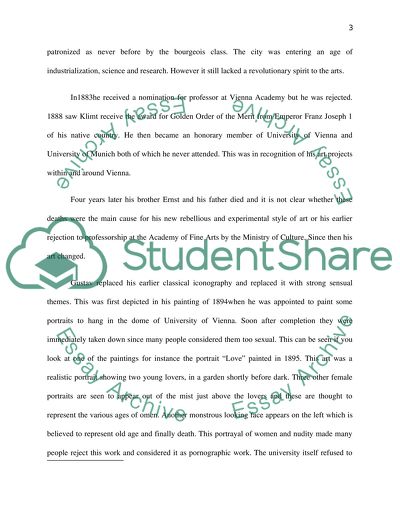Cite this document
(“Biography of the Austrian Artist and Symbolist Gustav Klimt Essay”, n.d.)
Biography of the Austrian Artist and Symbolist Gustav Klimt Essay. Retrieved from https://studentshare.org/biographies/1447716-gustav-klimt
Biography of the Austrian Artist and Symbolist Gustav Klimt Essay. Retrieved from https://studentshare.org/biographies/1447716-gustav-klimt
(Biography of the Austrian Artist and Symbolist Gustav Klimt Essay)
Biography of the Austrian Artist and Symbolist Gustav Klimt Essay. https://studentshare.org/biographies/1447716-gustav-klimt.
Biography of the Austrian Artist and Symbolist Gustav Klimt Essay. https://studentshare.org/biographies/1447716-gustav-klimt.
“Biography of the Austrian Artist and Symbolist Gustav Klimt Essay”, n.d. https://studentshare.org/biographies/1447716-gustav-klimt.


